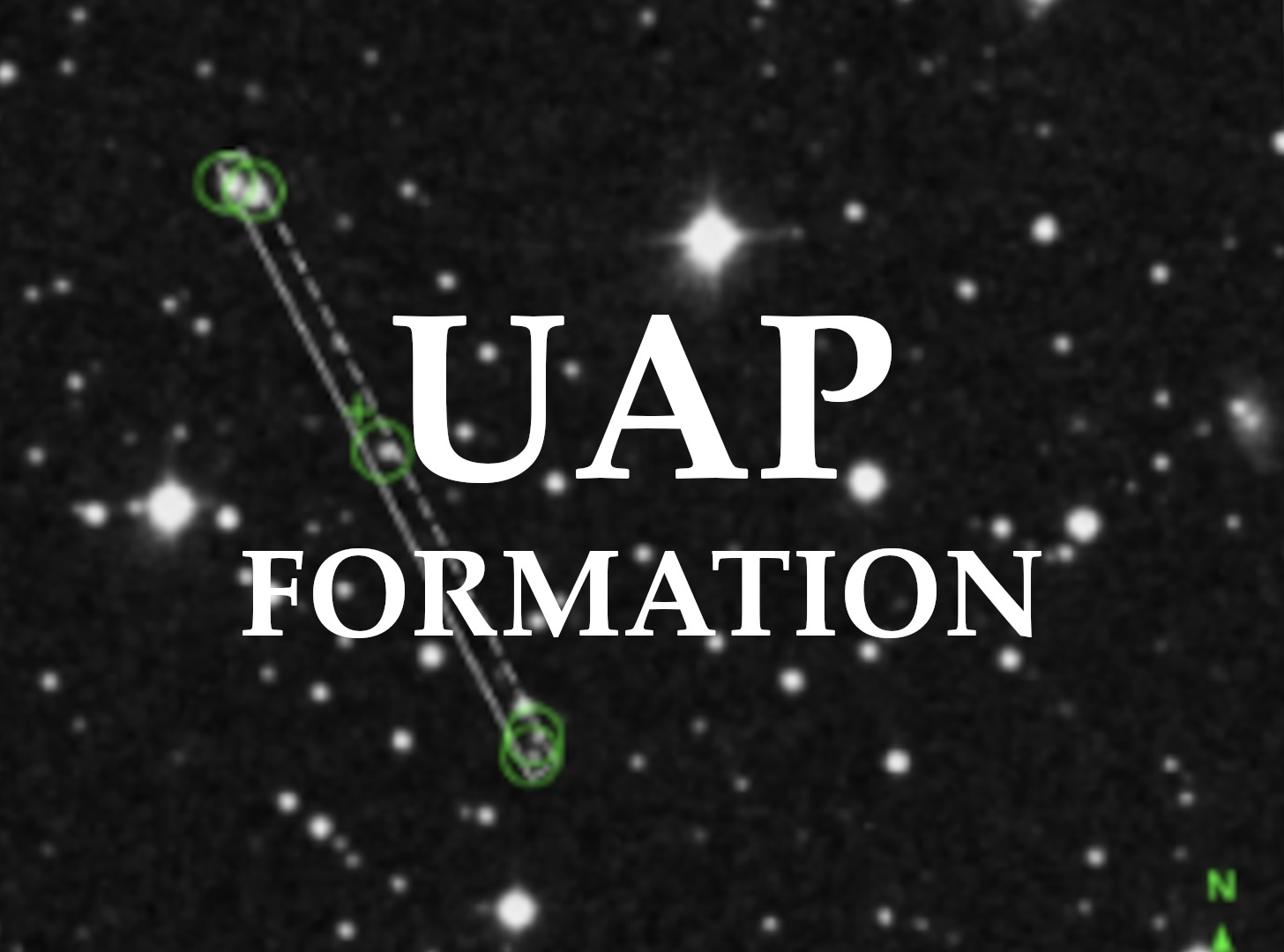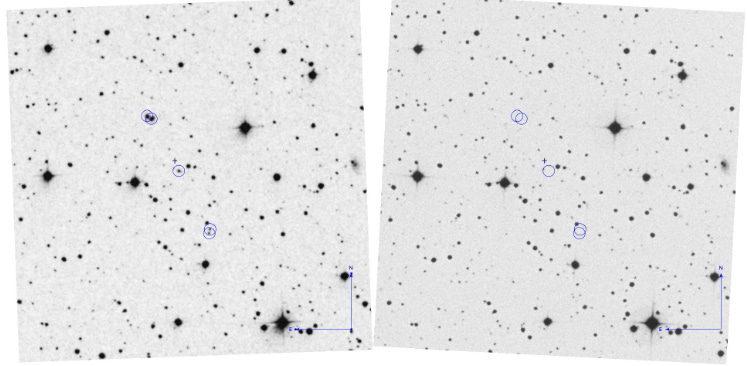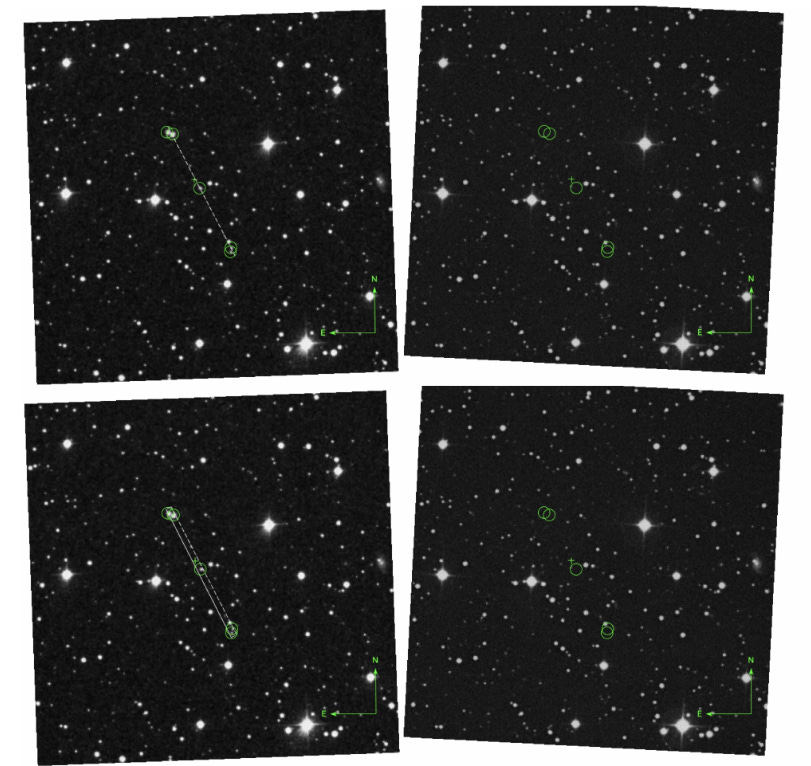A new study seemingly shows alignment of UAPs in space
A preprint article published on 25 July 2025 saw the authors examining events in which temporary light sources seemingly aligned in the Earth's sky, thereby supporting an artificial origin hypothesis.

The group of fifteen authors, led by Dr Beatriz Villarroel, present the most significant cases from a study previously reported by Sentinel News. In that previous paper, they used the VASCO project to detect light anomalies from the pre-space age era during nuclear tests. They found more than 100,000 UAPs, with a maximum of 4,528 on a single date. Even with a conservative estimation — as the same source could have been recorded on several photographic plates — this represents an astonishingly high number of UFO candidates.
This paper is titled 'Aligned, multiple-transient events in the First Palomar Sky Survey Spanish Virtual Observatory'. The authors give an intriguing example :
A particularly intriguing finding from the VASCO project was presented in Villarroel et al. (2021): nine faint, star-like objects that appeared and vanished simultaneously on a 1950s POSS-I plate. These transients were not visible on another plate taken half an hour earlier, nor on a third plate six days later. All known astrophysical explanations were considered but deemed implausible. The surface density of such transients was too high to be attributed to any known natural phenomenon. Whether this was due to unknown contamination on the plate with coincidentally star-like defects or a genuine astronomical observation remains unresolved. If real, one explanation could be that they were caused by solar reflections of flat, highly reflective objects in geosynchronous orbit (GSO) around the Earth.
To add to the intrigue, Solano et al. (2023) recently reported a bright triple transient event occurring on 19 July 1952, found among a set of ∿5000 short-lived POSS-I transients (Solano et al. 2022). As in the earlier case, the objects appeared and vanished within a single 50-minute exposure. Their brightness (r ∿15 - 16 mag) makes contamination less likely. Notably, this particular event coincides in time with one of the most extensively documented aerial anomalies in historical records: the Washington D.C. ”UFO flap” of July 1952, which unfolded over two consecutive weekends (July 18–19 and 26–27).
The authors explain one of the processes they use to limit false positives and prosaic causes :
Natural transients occur at a rate several orders of magnitude lower than glints from artificial objects. Even detecting two natural transients within a few arcminutes of each other during a one-hour exposure is extremely unlikely. In contrast, glints caused by solar reflections from flat, highly reflective surfaces at high altitudes—such as geosynchronous orbits—could result in multiple, simultaneous point-like transients during a single long-exposure image. If the glints originate from the same object, they may appear aligned along a narrow band or straight line. In simple geometries, the glints could be equidistant and of similar brightness. However, more complex surface structures may lead to irregular spacing and variable flux (e.g. Nir et al. 2020;Villarroel et al. 2022). Also objects flying in formationor coordinated swarms, might be found along geometric patterns.
The 5 best candidates were then selected, below is candidate 5 :
We show the candidate in SuperCosmos scans of POSS-I red (left) and POSS-II red (right) images(inverted). Transients are marked with blue circles. The candidate with a measured coordinate is marked with a cross (+).
We show the candidate in SuperCosmos scans of POSS-I red (left) and POSS-II red (right)images. The upper row shows a 3-point alignment within 1 arcsec. The lower row shows a 5-point alignment of within 10 arcsec. Transients are marked with green circles. The candidate with a measured coordinate is marked with a cross (+). The dashedlines shows the alignment (the white double line for the thicker alignment below).
This amazing formation of dots may be the most significant image in the history of UAP research.
However, what makes the events even more interesting is that Candidate 5 occurs on the same date as one of the most famous UFO mass sightings in history—namely, the 1952 Washington UFO flap (Villarroel 2024).






